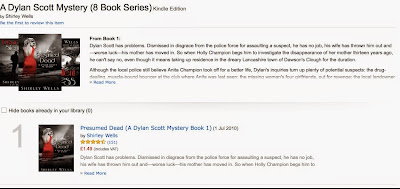by
Janis Patterson
I don’t care how hard you research
your facts, how meticulously you look things up, you’re going to miss
something. And once the book is out someone will call you on it. Sometimes
someone will call you on it even if you’re right.
Sigh.
Research is necessary to make your
book as true to life as possible – and that is important. Writers who ignore
facts show their readers an insulting disrespect.
However, sometimes no amount of
research turn up the facts that you need. Until lately I have been working on a
mystery set in 1916 New Orleans called A KILLING ON BASIN STREET. Now most of
the things I need to know are fairly easy to find – New Orleans history and WWI
are well-documented. Some things, though, are not. One of them is whether the
1916 Jordan Sport Marine automobile started with a self-starter (a dashboard
button not too different from what we have today) or with a crank. I need it to
start with a self-starter, but no one – and I mean NO ONE – seems to know
which. I’ve talked to car enthusiasts and classic car clubs and professional
organizations both in the US and abroad. No one knows. 1916-17-18 were the
years of transition from cranks to self-starters, but I cannot pin down a date
for the Jordan Sport Marine.
I’ve been asked why I just don’t
change the automobile to something which I can verify, but I don’t want to. The
Jordan Sport Marine was a wonderful, ground-breaking car which wouldn’t look
bad on today’s highways, and which is the perfect car for my heroine to have,
both cost and image-wise. Sigh. Anyway, I have solved the problem and, like
many of my betters, will take refuge in obfuscation. I have put in that the car
my heroine drives is ‘an advanced experimental model.’ Remember, weasel-words
are our friends!
I will admit that I sometimes take
research perhaps a mite too far. I said I had been working on A KILLING ON
BASIN STREET until recently. It immediately got pushed to the back seat when an
opportunity came to visit and actually stay at the dig house on an Egyptian
archaeological excavation. Civilians NEVER get invited to stay at a dig house.
First of all, the director (my dear friend Dr. Dirk Huyge) had to get
permissions for us from two branches of the Egyptian government – the Ministry
of Antiquities in Cairo and the Aswan Governate.
Dirk and I had been chatting
sporadically about doing a mystery set at the dig house, and I had a plot in
mind. So, when he asked, The Husband and I went. (Duh!) Being there made all the difference. I had
seen pictures of the house, and read about it, but the reality was totally
different than my imaginings. Now when I write on A KILLING AT EL KAB (and I’m
over 20,000 words in) in my mind I can actually walk the halls again, sit on
the terraces and watch the timeless Nile flow by, and see all the
archaeologists hard at work. It’s not as good as actually being there, but it’s
still wonderful. And real.
And I don’t have any illusions that
there won’t be someone who tells me I am wrong about something. It’s
inevitable.














.jpg)








